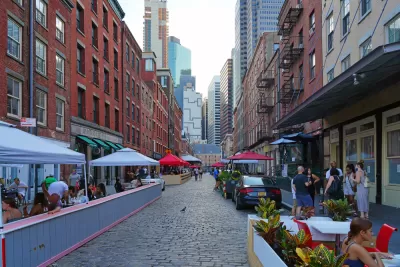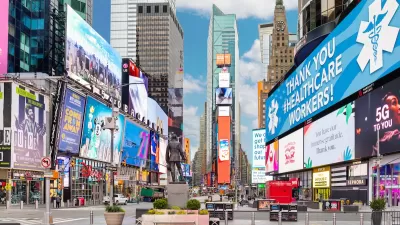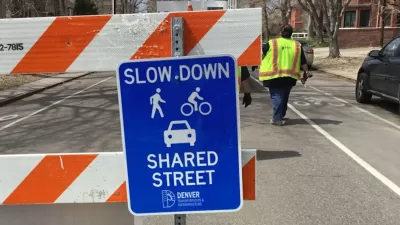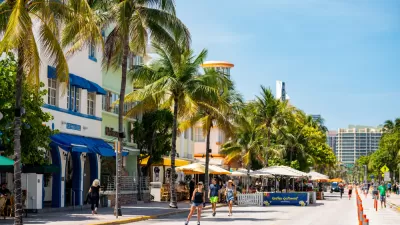The cities that are making their pandemic-era car-free experiments permanent.

While some cities are reverting their ‘open streets’ to car-oriented spaces, others are keeping the car-free spaces created during the pandemic. An article by Linda Poon, Feargus O'Sullivan, and Amy Yee in Bloomberg CityLab highlights the places where street transformations are becoming part of the permanent fabric of the city.
The list includes San Francisco’s John F. Kennedy Drive, a mile of which winds through Golden Gate Park. After the city banned cars on this stretch in 2020, local groups mounted an intense opposition campaign. “It has since turned into a full-out pedestrian promenade, with vibrant street murals and eye-popping art installations, including a trio of seven-foot-tall dachshund head sculptures from the city’s defunct fast-food icon Doggie Diner, planted right in the middle of the street.” Ultimately, the city decided to keep the road car-free.
Another success story is 34th Avenue in Jackson Heights, Queens, which became a vibrant pedestrian hub as part of the city’s Open Streets initiative. While there is some local opposition, the street has so far remained car-free.
The article also describes projects in Stockholm, Paris, Milan, Bogotá, and Quito, where a 1-mile segment of Viracocha Street was made safer for pedestrians and cyclists with extended sidewalks, new crosswalks, narrowed traffic lanes, and a street mural.
FULL STORY: The Cities Keeping Their Car-Free Spaces

Maui's Vacation Rental Debate Turns Ugly
Verbal attacks, misinformation campaigns and fistfights plague a high-stakes debate to convert thousands of vacation rentals into long-term housing.

Planetizen Federal Action Tracker
A weekly monitor of how Trump’s orders and actions are impacting planners and planning in America.

San Francisco Suspends Traffic Calming Amidst Record Deaths
Citing “a challenging fiscal landscape,” the city will cease the program on the heels of 42 traffic deaths, including 24 pedestrians.

Defunct Pittsburgh Power Plant to Become Residential Tower
A decommissioned steam heat plant will be redeveloped into almost 100 affordable housing units.

Trump Prompts Restructuring of Transportation Research Board in “Unprecedented Overreach”
The TRB has eliminated more than half of its committees including those focused on climate, equity, and cities.

Amtrak Rolls Out New Orleans to Alabama “Mardi Gras” Train
The new service will operate morning and evening departures between Mobile and New Orleans.
Urban Design for Planners 1: Software Tools
This six-course series explores essential urban design concepts using open source software and equips planners with the tools they need to participate fully in the urban design process.
Planning for Universal Design
Learn the tools for implementing Universal Design in planning regulations.
Heyer Gruel & Associates PA
JM Goldson LLC
Custer County Colorado
City of Camden Redevelopment Agency
City of Astoria
Transportation Research & Education Center (TREC) at Portland State University
Jefferson Parish Government
Camden Redevelopment Agency
City of Claremont





























